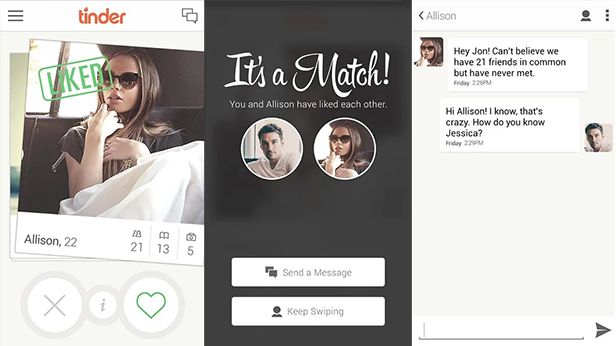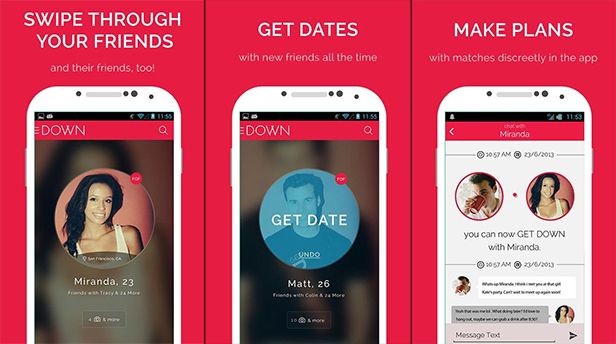The way we meet people is getting ever more technological, and if we’re talking specifically about romantic encounters, the situation really starts to get out of hand. The new trendy thing is Tinder, a service that lets you view photos of people in your city and decide whether you like them or not. If the interest is mutual, the app will allow you to chat to set up a date. The more than 10 million encounters per month arranged on Tinder speak for themselves, but are we taking the “technification” of dating too far?
What’s Tinder all about?
The app (available for iOS and Android) is utterly simple and premised upon that old errant idea of “hot or not”. Once you’ve registered and added a few personal details along with some of your photos, you can search for people that are looking for a date within a specific distance of wherever you are.
The concept is as simple as viewing successive potential dates and deciding if you’re interested or not. If the other person also finds you interesting after looking over your profile, you can open a chat conversation to get to know each other a bit better and set up a date.

The trendiest app
In Internet simplicity is synonymous with success. According to Sean Rad, Tinder’s CEO, since its launch in September 2012 75 million “matches” have been made—that is, couples connected—and the average total use time per user is 77 minutes. The service is useful no matter where you are. In fact, in the Sochi Winter Olympics many athletes admitted to using Tinder to find hookups with other competitors. And we already know that if influential people start using something everybody’s going to start using it.
One of the most ensnaring features about this app is the option to associate it with your Facebook account, so you can see if you have friends in common with the people you find on Tinder.
Alternatives to Tinder
Most dating services have now made the jump to smartphones, offering a fast and direct means of browsing through potential matches. So popular platforms like Meetic or Badoo have complete apps with features from the desktop version as well as mobile-exclusive ones.

Then there are “specialized” apps like Grindr, focused exclusively on gay males; or Down (initially called Bang With Friends), which let you do find out whether your Facebook friends are interested in you. What’s clear is that no matter how much they try to sell us the definitive solution to finding the love of your life, in the end all these apps are just a way to make ourselves feel good mainly in terms of sexual satisfaction.
Too good to be true?
As they said in that film, there’s no need to call it love when you really mean sex. The dating ritual, regardless of how recursively it’s defined, involves far more than choosing or discarding loads of sepia-toned selfies. In fact, the concept has recently developed of the “lazy single” who’s lost all energy to find a partner and just looks for empty ways of satisfying their own ego. Because a ‘Like’ is not synonymous with a date and neither is a date synonymous with success, not to mention any hopes you might have of going beyond the bedroom.
That said, there will certainly be those who find these services helpful in facilitating encounters between like-minded people who move in the same circles. You have to keep in mind, though, that it is precisely the people with that mind-set that will become scarce, and as soon as you glance over the users who “offer” themselves on these sites you’ll quickly realize that what most of them are looking for little else besides a hookup. And obviously, if that’s what you’re after, then go for it!









Nice cite
Jogonno akta mohila
A gulo dhako tumie